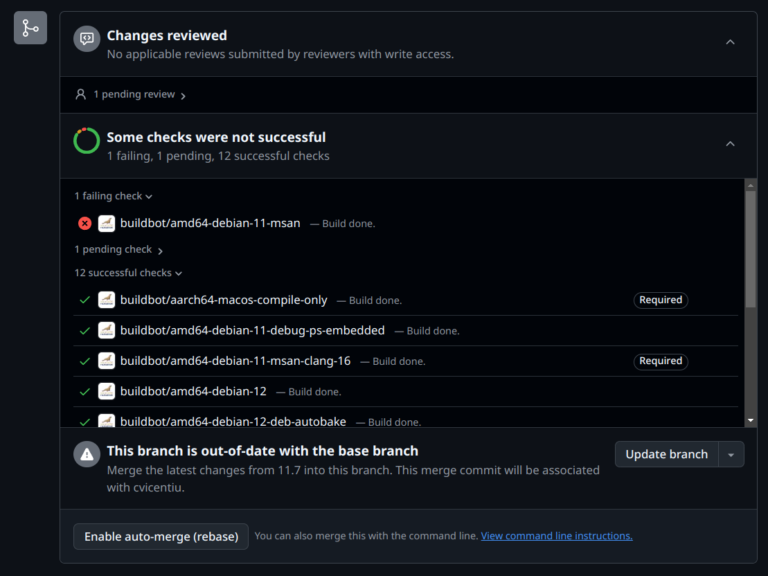Importantly, Ubuntu 24.04 LTS will be supported for 5 years until April 2029, for Ubuntu Desktop, Ubuntu Server, and Ubuntu Core.
ls -l /etc/apt/sources.list.d/
sudo apt autoremove
Open the /etc/update-manager/release-upgrades upgrade configuration file and change the value of “Prompt” to “normal“, which ensures you’ll be notified about the upgrade and have the option to choose whether to proceed.
Step 1: Back Up Ubuntu Data
To enable third-party repositories, you need to to find third-party repositories under /etc/apt/sources.list.d/ directory that may have been disabled during the upgrade process.
sudo do-release-upgrade
This guide will walk you through the process of upgrading your current Ubuntu 22.04 system to the latest Ubuntu 24.04 LTS.
There you go! We hope you have successfully upgraded your Ubuntu version from 22.04 to 24.04. If you encountered any issues along the way or have thoughts to share, use the feedback form below to reach us.
Now follow on-screen instructions to upgrade to Ubuntu 23.10 release and reboot the system.
Confirm that the third-party repositories are enabled by running the following command to ensure the necessary repositories are active.
reboot
sudo do-release-upgrade -d

Before you start upgrading your system, it’s important to make sure there are any updates needed. After that, update and upgrade your current packages. Once the upgrade is finished, restart your system so all the changes can work properly.
tar -cvzf /path/to/external/drive/backup_home.tar.gz /home/username
To upgrade to Ubuntu 24.04, you have to update to Ubuntu 23.10 first. Then, from there, you can upgrade to Ubuntu 24.04.
sudo apt install update-manager-core
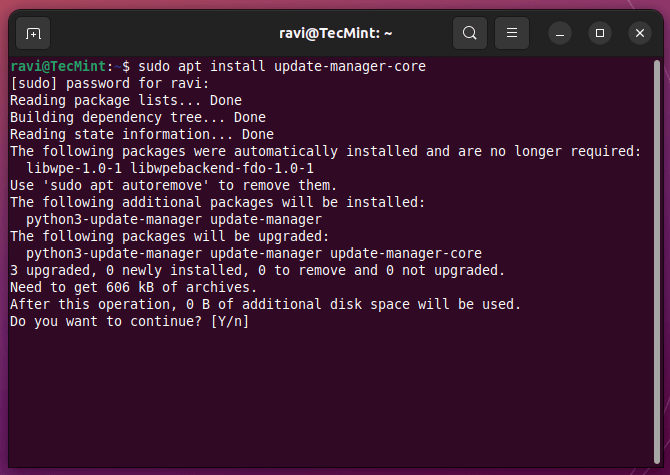
sudo nano /etc/update-manager/release-upgrades
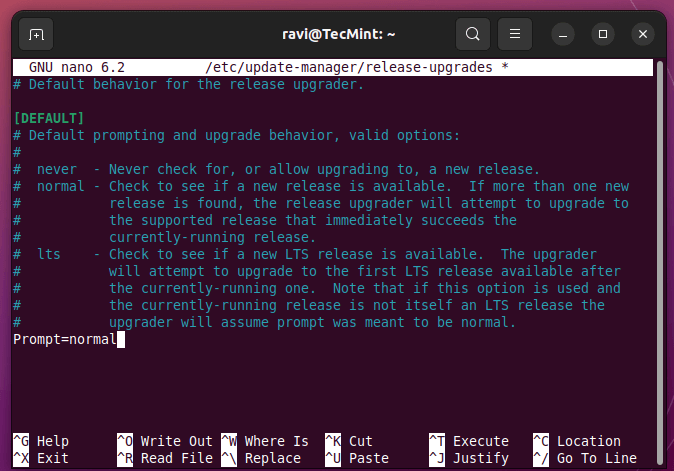
Just like every new Ubuntu release, Ubuntu 24.04 ships with new features including the latest and greatest software such as the Linux kernel, GNOME 46 and refreshed state-of-the-art toolchain. You can find more information about the new changes from the release notes.
sudo ufw allow 1022/tcp
You can also use graphical backup tools like Deja Dup or Timeshift to back up your data to an external drive.
Checking for a new Ubuntu release
There is no development version of an LTS available.
To upgrade to the latest non-LTS development release
set Prompt=normal in /etc/update-manager/release-upgrades.
The mount point will be listed in the second column of that entry, which typically looks like “/mnt/external” or “/media/username/external“. This mount point is where your external drive is currently connected and accessible in your system.
sudo nano /etc/update-manager/release-upgrades
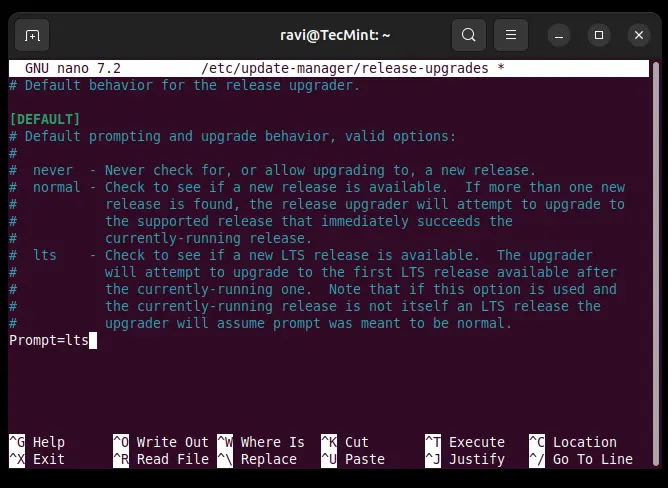
Here’s what’s happening and how to address it:
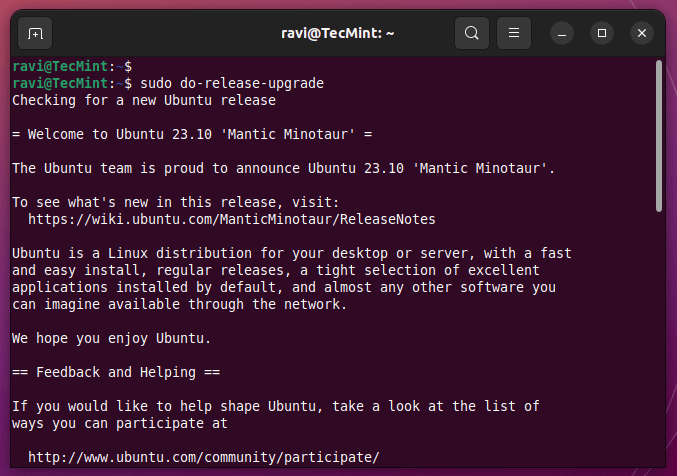
rsync -av –progress /home/username /path/to/external/drive
Since you want to upgrade from Ubuntu 22.04 LTS to the latest LTS release (24.04 LTS), here’s what you need to do:
The stable version of Ubuntu 24.04 LTS (code-named Noble Numbat) is released on April 25th 2024, if you are curious to know what is in it, you can now upgrade to the version of it from lower version for testing purposes.
To get started, plug in your external storage device like a USB drive or an external hard drive, and make sure your computer can see it.
Open the terminal and type “lsblk” to find your external drive in the list, which might look something like “/dev/sdb1“.
Step 5: Enable Third-Party Repositories on Ubuntu
To back up your data on Ubuntu 22.04 to an external drive before upgrading to Ubuntu 24.04, you can follow these commands:
sudo do-release-upgrade -d
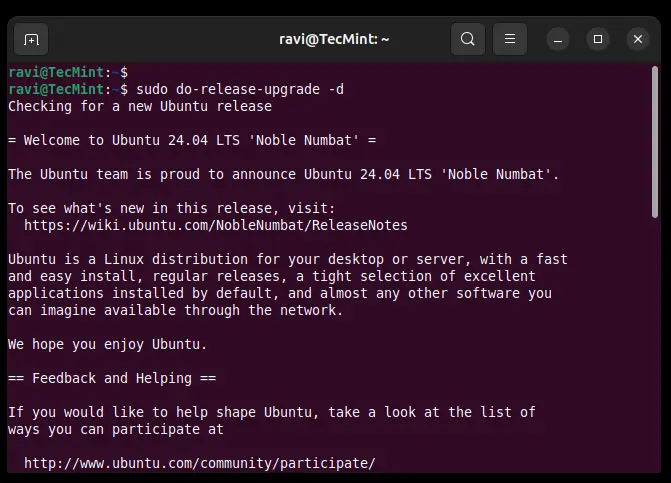
Step 4: Remove Obsolete Packages
Next, uncomment and remove the # sign at the beginning of each line for each repository in the respective files.
sudo apt list –upgradable
sudo apt update && sudo apt upgrade -y
reboot
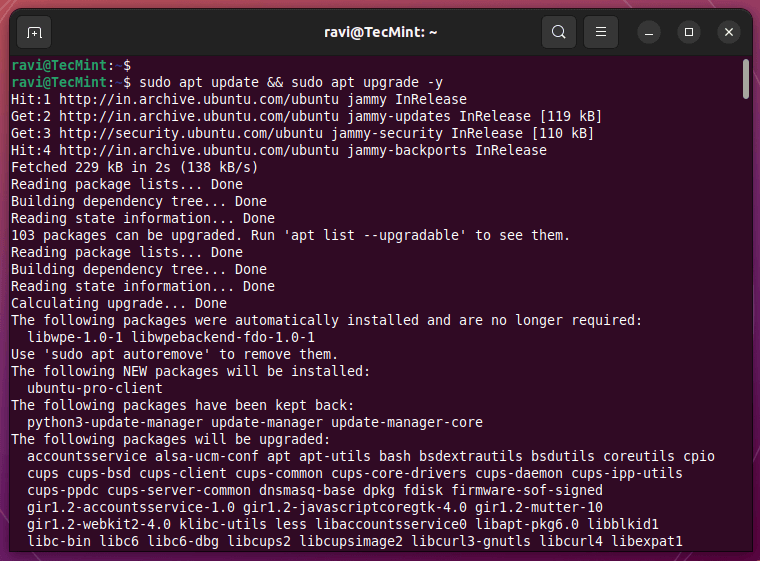
Step 3: Upgrade Ubuntu 22.04 LTS to 24.04 LTS
Using the rsync command to back up your Home directory to an external drive:




